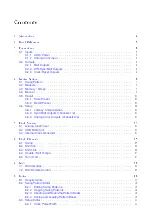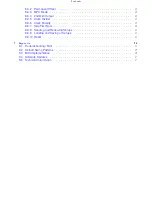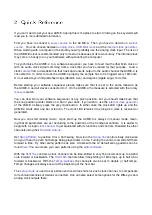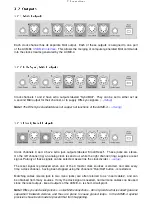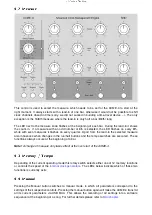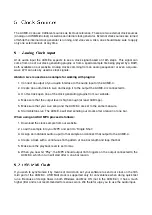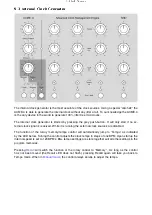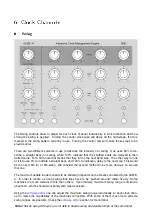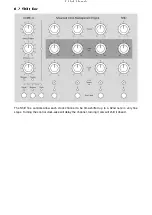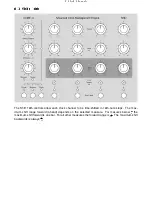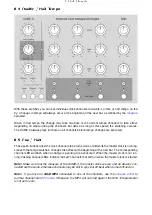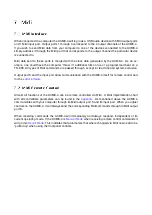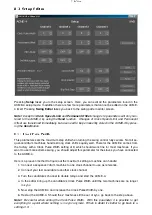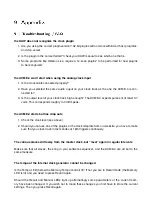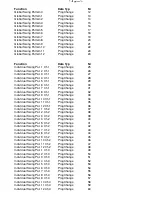
6 Clock Channels
6.1 Swing
The Swing controls allow to adjust for each clock channel individually, in which direction and how
strong the swing is applied. Turning the control clock-wise will delay all the 16th-steps, that are
marked in the swing pattern currently in use. Turning the control ccw will cause these steps to be
played earlier.
There are two different systems in use to describe the intensity of a swing. One uses 50% to de-
scribe a straight beat (no swing), while 100% indicate that the shuffled beats are delayed to their
dotted value. For a 16th-note that means that they fall on the next 32nd step. The other way to look
at it is to use 0% to indicate a straight beat, and 100% to indicate a delay to the next step. This would
be the next 16th for a 16th-swing. We consider the second method to be more obvious, so we use
that one.
The maximum usable range for beats to be shifted in depends on the slaves connected to the ACME-
4. In order to create a strong swing clock ticks have to be “pushed around” rather heavly. Some
machines are more tolerant to this than others. Upon delivery maximum swing range is limited to
about 50%, which should work safely with most receivers.
Using the
one can adjust the maximum swing range individually for each clock chan-
nel to match the capabilities of the machines connected. With some of them much more extreme
swing ranges are possible. Check the
section for more detail.
Note!
Slaves using DIN-sync are not able to handle swing and double tempo at the same time!
15


